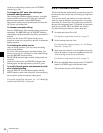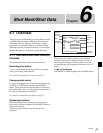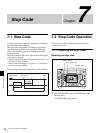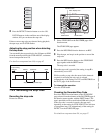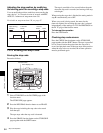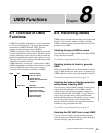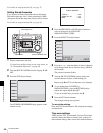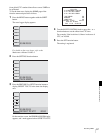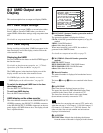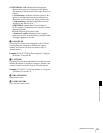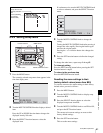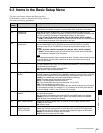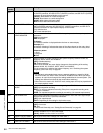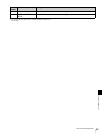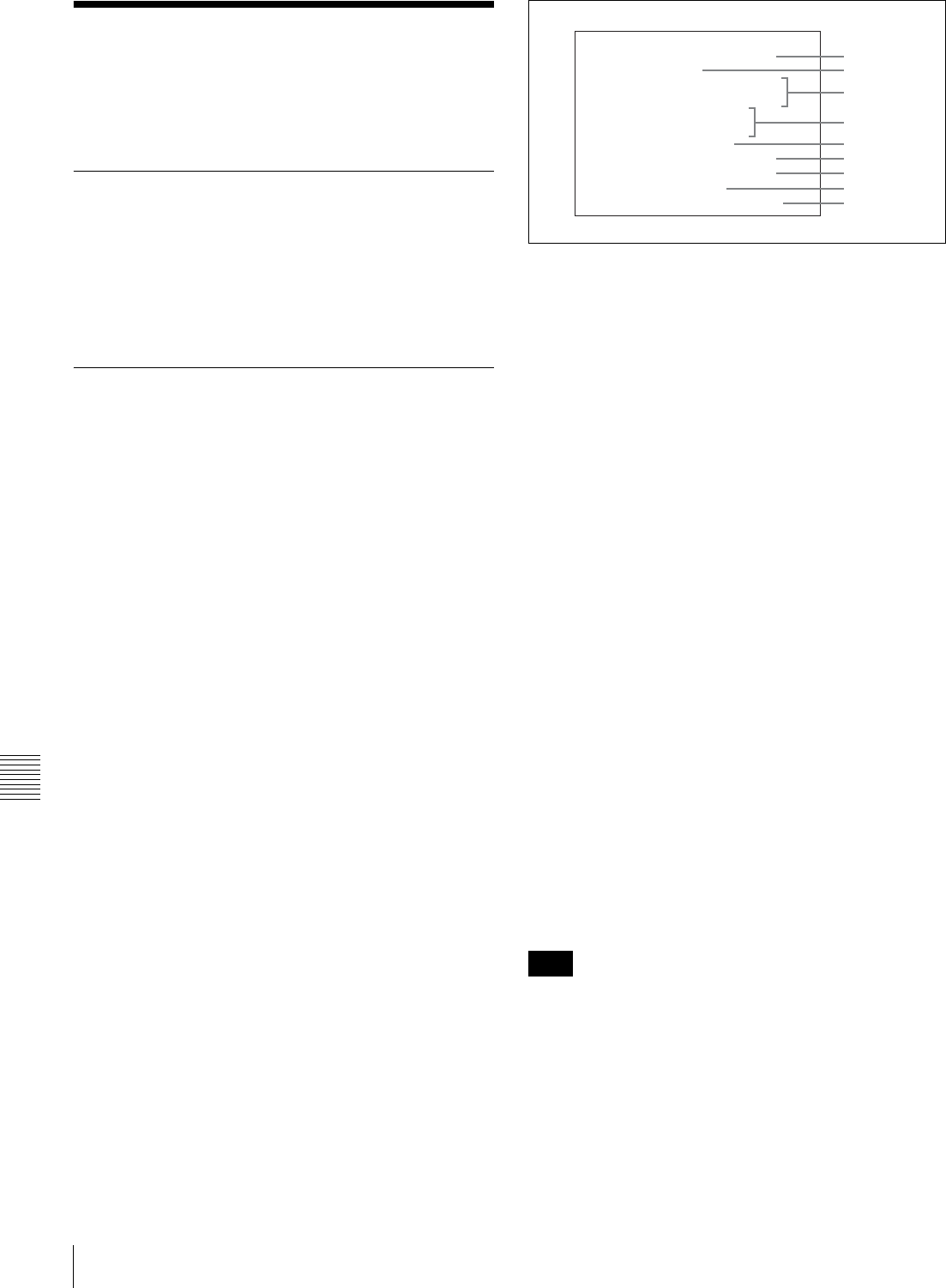
58
UMID Output and Display
Chapter 8 UMID Functions
8-3 UMID Output and
Display
This section explains how to output and display UMIDs.
8-3-1 UMID Output Settings
You can choose to output UMIDs or not and select either
Basic UMID or Extended UMID when you choose to
output UMIDs. Make these settings using setup menu item
651.
For details on setup menu item 651, see page 72.
8-3-2 UMID Display
During recording and playback, UMID data appear in the
time data display area of the display window and on the
video monitor screen.
Displaying the UMID
Press the UMID function button on the P6 OTHER page of
the function menu.
For details on function menu operation, see “3-7 Basic
Operations of the Function Menu” on page 31.
The UMID appears in the time data display area of the
display window and on the video monitor screen.
For UMID display on the video monitor screen, see
“ UMID display on the video monitor” on page 58.
To switch the displayed UMID item in the time
data display area
Turn the MULTI CONTROL knob.
To exit from UMID display
Press the EXIT function button.
UMID display on the video monitor
The video monitor connected via the COMPOSITE OUT 2
(SUPER) connector, the SDI OUT 2 (SUPER) connector,
or the HD SDI OUTPUT (SUPER) connectors on the rear
panel displays all UMID items at once. The display of each
line is explained below.
a INSTANCE (Instance Number generation method
and Instance Number)
The generation method is displayed as follows.
CP+16: 16-bit PRS (pseudorandom sequence) +Copy No.
method
24PRS: 24-bit PRS method
others: Other than the above
When menu item 656 is set to NEW, the number is
generated in the SMPTE format.
For details on setup menu item 656, see page 73.
b MATERIAL (Material Number generation
method)
SMPTE: SMPTE format
IEEE 1394 ZONE: IEEE 1394 ZONE format
IEEE 1394 RND: IEEE 1394 RND format
others: Other than the above
c Material Number
The material number is displayed in hexadecimal across
two lines.
The items 4 through 9 below are contained in the Source
Pack.
d DATE/TIME
Date/Time data are displayed across two lines.
The upper line shows the MJD (Modified Julian Date)
contained in the Source Pack, converted to UTC.
The lower line shows the data in unit count format
(hours:minutes:seconds) converted to UTC.
The function for converting unit count to UTC works only
when the unit rate is 2 (24 frames), 3 (24/1.001 frames), 4
(25 frames), 6 (30 frames), or 7 (30/1.001 frames). For
other unit rates, the unit rate number and unit rate are
displayed in hexadecimal.
e ALTITUDE
XXXXXXXXm: Altitude data indicating the distance
from the center of the earth is displayed in this format.
Note
INSTANCE 24PRS XX-XX-XX
XX-XX-XX-XX-XX-XX-XX-XX
UMID INFORMATION
-XX-XX-XX-XX-XX-XX-XX-XX
XX:XX:XX +XX:XX
DATE/TIME 20XX/XX/XX
ALTITUDE XXXXXXXXm
LONGITUDE EXXX XX'XX.XX
LATITUDE S XX XX'XX.XX
ORGANIZATION XXXX
USER XXXX COUNTRY XXXX
MATERIAL SMPTE
1
2
3
4
5
6
7
8
9



